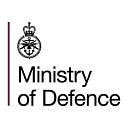The long and expansive 73-year history of NATO
4 April 2022 marks the 73rd anniversary of the founding of NATO
The North Atlantic Treaty was signed on 4 April 1949 committing the founding states to freedom and security. It’s an intergovernmental military alliance between 30 member states, 28 of which are in Europe and the other 2 being part of North America.
The Alliance’s creation was part of a broader effort to serve three purposes: deterring Soviet expansionism, forbidding the revival of nationalist militarism in Europe through a strong North American presence on the continent, and encouraging European political integration.
Article 5
The philosophy driving the organisation can be seen in article 5 of the treaty which says:
“an armed attack against one or more of them…shall be considered an attack against them all”
Amidst the construction of the Berlin Wall, the tension between NATO and Russia re-surfaced. Because of this NATO created a new purpose called détente. This is the means by which the easing of hostility or strained relations, especially between countries can take place.
The United States and the Soviet Union signed the Intermediate-Range Nuclear Forces (INF) Treaty in 1987, banning the use of all nuclear and ground-based missiles, which showed the Cold War was coming to an end.
Partner nations and Yugoslavia — 1990s
NATO increased its reach in the 1990s when it established the North Atlantic Cooperation Council and Mediterranean Dialogue. The agreements paved the way for new relations with dozens of nations, without them joining NATO as a full member.
The fall of Communism in the east gave way to the rise of nationalism and ethnic violence, particularly in the former Yugoslavia.
Initially, Allies hesitated to intervene in what was seen as a civil war. NATO intervened when evidence of ethnic cleansing became clear.
60,000 soldiers from across NATO countries were sent to Yugoslavia to put an end to the atrocities going on in the country.
9/11 terrorist attacks — 2001
The 11 September 2001 terrorist attacks on the World Trade Center and the Pentagon showed Allies that disorder and war across the globe could cause consequences domestically.
It was the first time that article 5 was invoked. Also in response to the terrorist attacks, a coalition of nations, including a number of NATO Allies intervened in Afghanistan in the autumn of 2001. This was to try and deny al-Qaida a home in Afghanistan.
Following the defeat of the Al-Qaida supporting Taliban regime, the UN Security Council deployed an International Security Assistance Force (ISAF) to the country.
This force aimed to help stabilise the country so that peace could be seen in Afghanistan again. In August 2003, NATO took over command and coordination of the ISAF.
Adversary threats
Russia’s annexation of Crimea in 2014 and the recent illegal and aggressive actions against Ukraine have been a reminder of the importance of NATO’s purpose: collective defence.
Since NATO was formed in 1949, the UK has consistently taken a leading role. In the 21st century, NATO faces an ever-growing number of new threats.
The UK Armed Forces and NATO continuously train and prepare for threats now and in the future. #WeAreNATO
